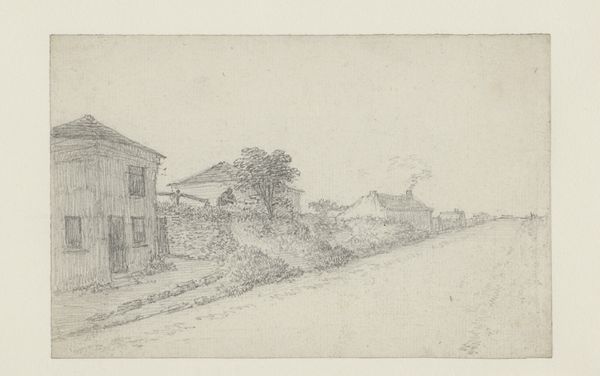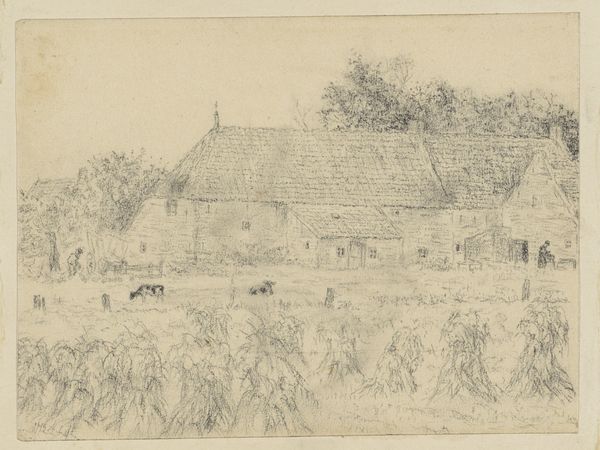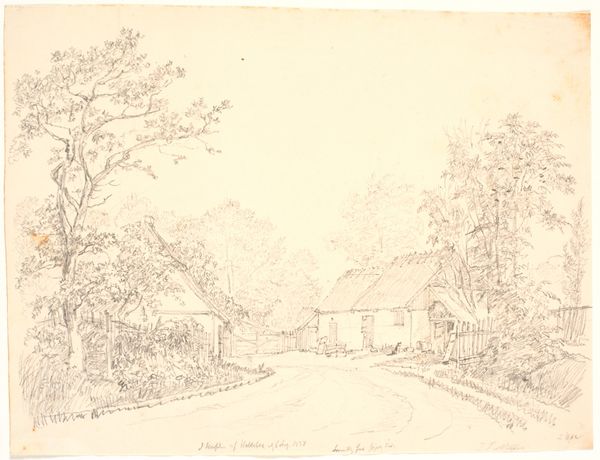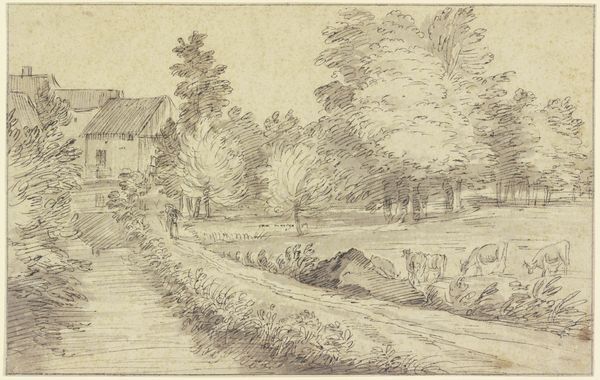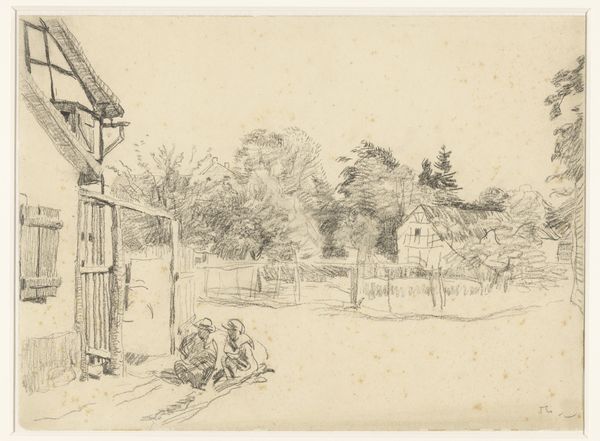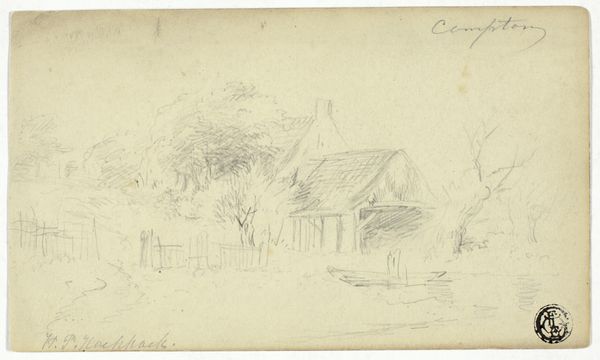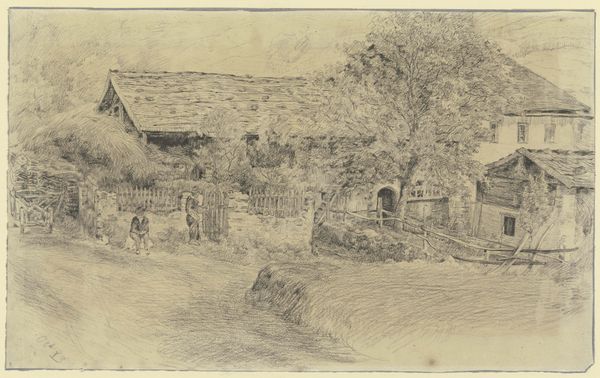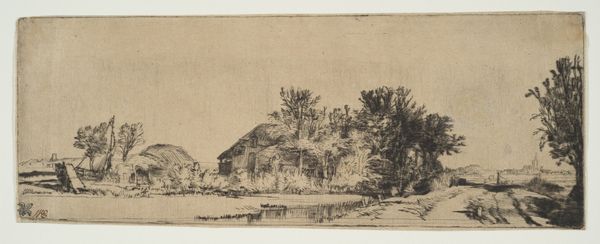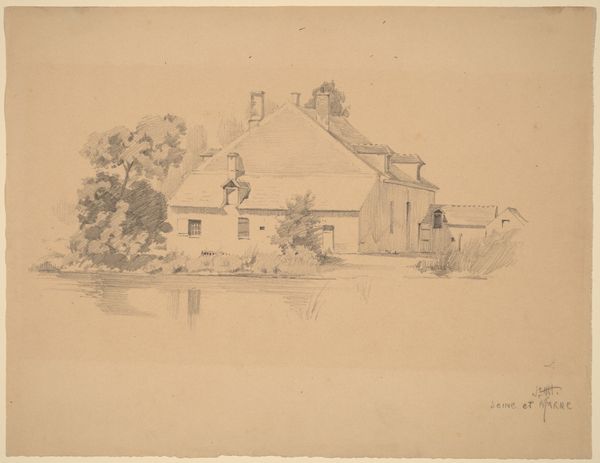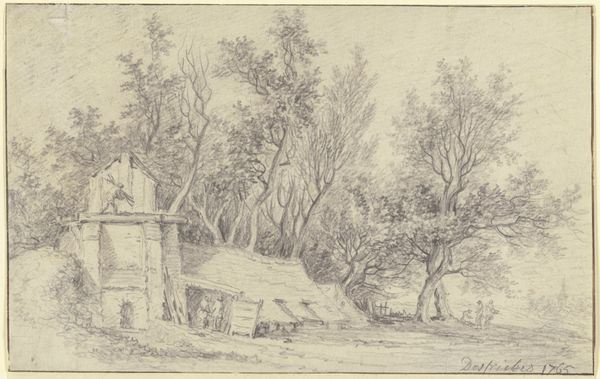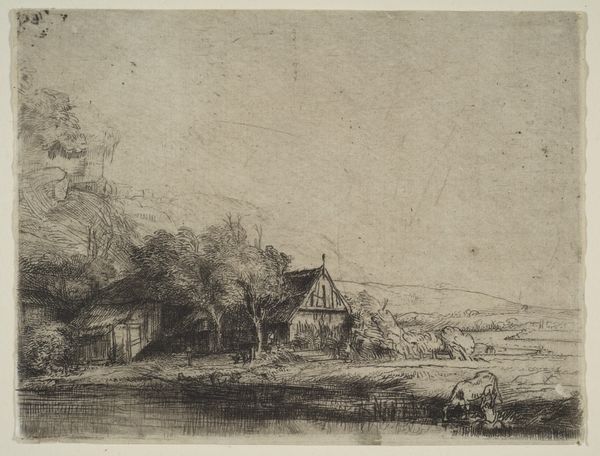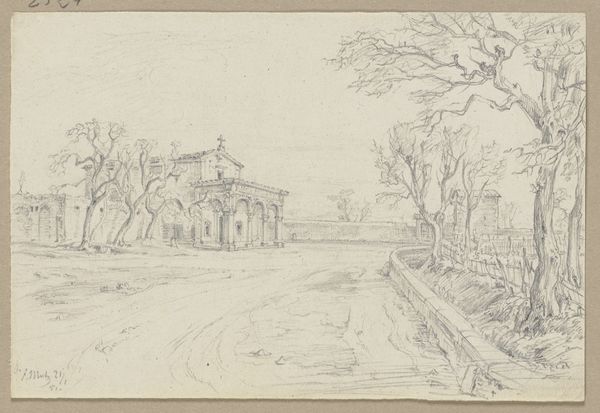
drawing, paper, pencil
#
drawing
#
landscape
#
etching
#
paper
#
pencil
Copyright: Public Domain
Curator: Let's turn our attention to Otto Scholderer's "Street of Pickering," created in 1894 using pencil and etching on paper. Editor: My initial impression is one of subdued stillness. It’s monochromatic, rendered in delicate pencil strokes, which evokes a sense of quiet observation. Curator: Indeed. Notice the deliberate use of line. The perspective, while subtly skewed, guides our eye through the composition. Scholderer uses hatching to suggest volume in the buildings and trees, a masterful command of tonal values within a limited palette. Editor: The road, rendered with minimal detail, speaks volumes. It calls to mind well-worn paths, suggesting familiarity, community. The muted palette reinforces this sense of memory and longing for simpler times. The inclusion of animals adds an idyllic quality. Curator: The understated composition directs us towards specific focal points—the strong angularity of the buildings juxtaposed against the more amorphous form of the large tree at the end of the lane. Observe how these shapes interact and establish spatial relationships within the picture plane. Editor: The tree stands as a prominent symbol—perhaps a representation of growth, stability, or even the interconnectedness of the inhabitants and the land that provides their life. Even in this quiet scene, its presence seems pivotal, hinting at folklore beliefs that center on rural trees and rural places as containers of the sacred. Curator: I appreciate the precision with which Scholderer captures architectural forms. Notice how each line contributes to a sense of structured space, despite the inherent softness of pencil as a medium. He exploits the contrasts, almost suggesting a hidden geometric scaffolding beneath the surface. Editor: This is where art can transcend reality. I find the apparent artlessness of the scene captivating. It’s a reminder that there are many complex meanings to find when contemplating ordinary images from the past. Curator: Absolutely. Scholderer compels us to consider the formal properties that generate meaning. Editor: And to meditate on how art reflects and reshapes our cultural perceptions of place.
Comments
No comments
Be the first to comment and join the conversation on the ultimate creative platform.
